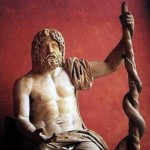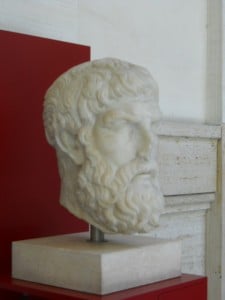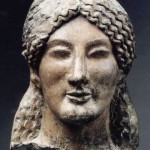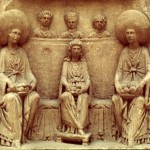The first of January holds many celebrations for the New Year. Being the first of the year, and first day of the month, we naturally begin with Janus, the God of Good Beginnings. Branches of bay laurel, gathered from the sacred grove of Strenua and carried in procession along the Via Sacra up to the Arx. Strenua is a Sabine Goddess of Purification and Health. She is comparable to Greek Hygenia and to Latin Salus. Her cultus was introduce by Titus Tatius who ruled as co-chieftan with Romulus. The Arx is the highest point in Rome and where the augurs took the auspices for the coming year. In carrying Strenua to the Arx, including Her in the annual auspices, the Romans sought Her benefits in the coming year. Over the years the ceremonies grew until it became customary to pass gifts between family and friends on the first of the New Year. Some believe that Strenua is the original Goddess known as Befana today. Laurel twigs is the symbolic gift each receives, sometimes wound with red yarn. Each twig should hold seven leaves, which are then burned as incense for Strenua with prayers for good health.
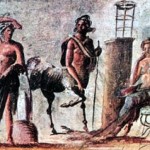
Rome did not enjoy good health in every year. The City saw many plagues devastate its population. In 293 BCE a plague so engulfed the City that the Senate sent a commission to the city Epidaurus, seeking the aid of Aesculapius. Aesculapius was a son of Apollo. After his mortal mother died, he was taken to the centaur Chiron to be trained in medicine. His skills grew until one day his father appeared and asked Aesculapius to resurrect His lover Hippolytus. Aesculapius did as his father asked, and then was struck down by Jupiter for the hubris of raising the dead. But the semi-divine Aesculapius was then raised to the stars, in the constellation of Orphiucus, and became the patron God of Medicine. His temples became home to the Hippocratic School of Medicine. The delegation from the Roman senate asked the king of Epidaurus whether they could bring a statue of Aesculapius back to Rome. He granted their wish and when the statue was being loaded onto a boat it was joined by a huge serpent. This serpent was believed to be the genius of Aesculapius that traveled to Rome.

Upon arriving at Rome, the boat carrying the statue went aground on the insula in the River Tiber. The large serpent descended down the gang plank and took his abode there. Around him a Temple of Aesculapius was built in the shape of a ship. Eventually it became the first hospital in Rome, and one of a unique character. It was a hospital for injured and elderly slaves. Aesculapius was associated with the youthful God Veiovis (or Vedjovis). Where statues of Aesculapius depict an elderly man leaning on a crutch, on which a serpent climbs, Veiovis appears as a youthful Jupiter, holding thunderbolts, with a she-goat beside Him. The she-goat was said to have suckled infant Jupiter when His mother hid Him from Saturn. In 194 BCE a Temple of Veiovis was also built on the insula in the River Tiber, near that Aesculapius, and was dedicated on his birthday, 1 January. Veiovis and Aesculapius are thus celebrated together and, along with Strenia, represent our wishes for a happy and healthy community.



